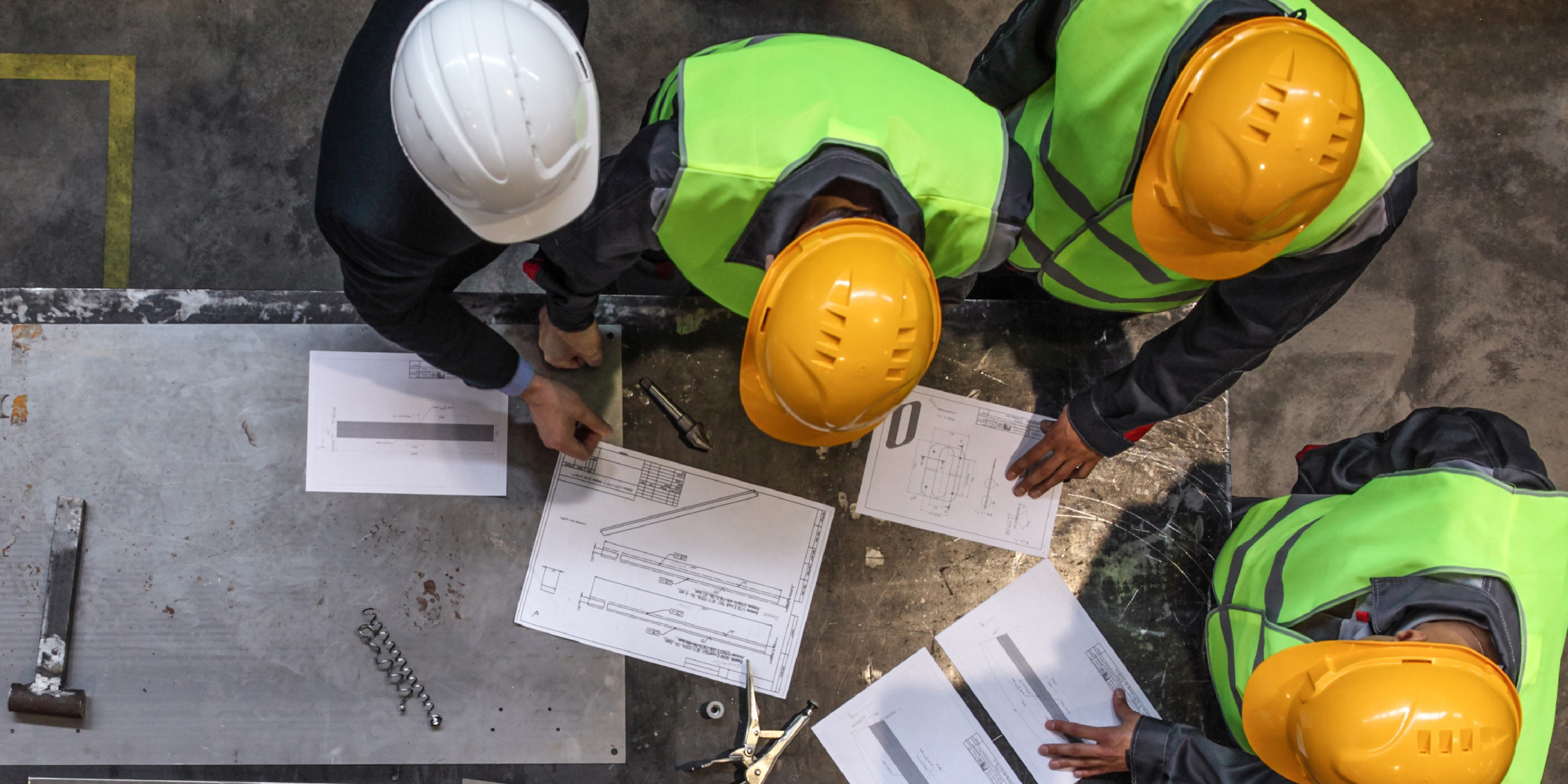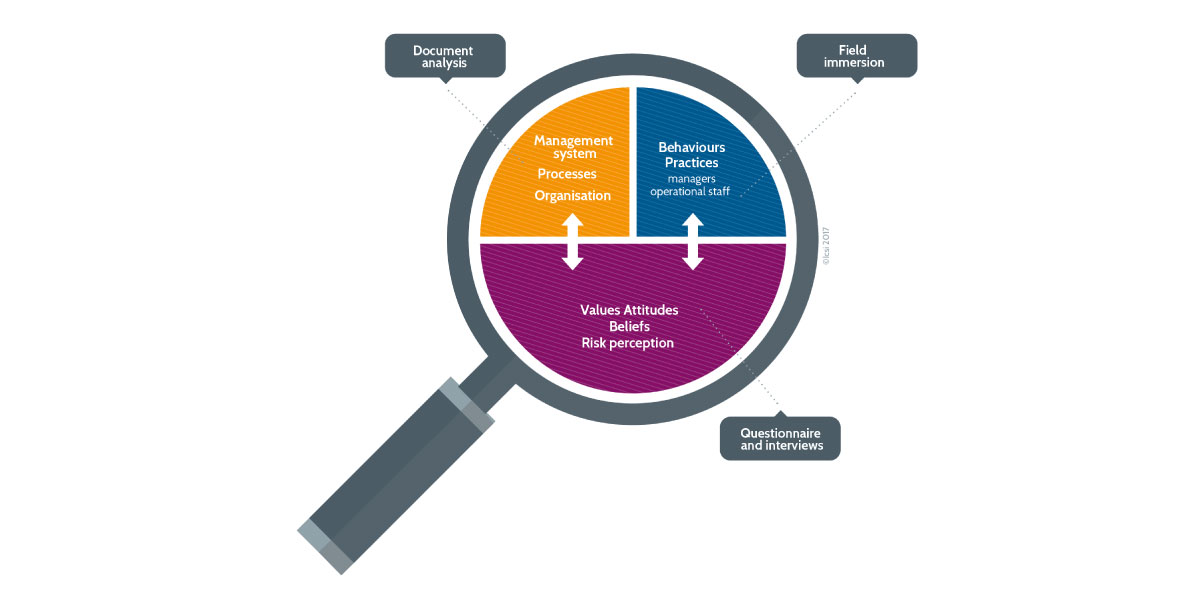How to assess safety culture?
 How to assess safety culture?
How to assess safety culture?
Actors may be required to examine their company’s safety culture: following a serious accident or series of accidents; when demographic changes occur (retirements, massive staffing changes); following a significant technological or organisational change; under pressure from regulatory authorities, etc.
| How to assess safety culture? |
Safety culture is complex, it combines ways of doing and ways of thinking. Moreover, its least-visible layers are those that most influence the behaviour of actors and it’s unrealistic to imagine that a quick and simple measurement could identify them. It’s better to think in terms of “assessment”, “diagnosis”, “evaluation” or “description”, rather than “measurement”.
Extract from "Safety culture, from understanding to action » - © Icsi
Evaluating – or describing – a safety culture means understanding how the organisational culture (and its different elements) positively or negatively influences safety-related decisions.
The safety culture diagnosis characterises the organisation’s safety culture, its maturity in terms of safety, and highlights the levers for action.
A diagnosis is a snapshot of how those working at the heart of the organisation perceive safety-related matters, and how safety is experienced and integrated in daily practices, from top management right down to front-line staff.
The assessment highlights:
- make visible what people in the organisation are thinking: it looks at beliefs, perceptions, convictions,
- know what they’re doing: by clearly identifying safety practices and behaviours, the difficulties encountered, deviations from instructions/rules,
- question the coherence and alignment between what they are thinking and what they are doing
| Methodology |
Before the diagnosis can begin, it is necessary to understand and take into account the organisation’s context, its history and constraints (other than safety).
During the diagnosis, several complementary methods are used: internal documents (e.g. procedures, the SMS, the accident rate) are analysed, a questionnaire is administered, qualitative individual and/ or group interviews are held, and there is a period of immersion in the field to observe what happens in the workplace and the day-to-day trade-offs.
| The conditions of success |
Although the assessment is a crucial starting point for any organisation wishing to change their safety culture, it is not an objective in itself. It is best to avoid embarking on this type of undertaking if the organisation is not ready to collectively face, and deal with the (often deep-rooted!) problems that the assessment reveals.
The more this diagnosis is shared by all stakeholders, the higher the chances everyone will be involved later on.
It is important to note, however, that a company’s top management should only initiate an assessment of its safety if it is ready to:
- involve all other concerned parties in the process: all echelons of management, employee representatives, front-line staff, support departments, contractor companies, even local residents or regional/local authorities, etc.
- hear, share and discuss news – even when it is bad
- draw lessons and be ready to take action
Time to get started!
Ready to launch a safety culture approach in your company? Take a look at how our team of experts can help you to run a safety culture diagnosis.

